 |
|
 |
| |
發行人:黃建璋所長 編輯委員:曾雪峰教授 主編:林筱文 發行日期:2019.10.30 |
| |
|
 |
|
 本所陳奕君教授指導許書銘博士生榮獲「European Materials Research Society 2019 Fall Meeting (歐洲材料研究學會2019秋季會議) Graduate Student Award」,特此恭賀!
本所陳奕君教授指導許書銘博士生榮獲「European Materials Research Society 2019 Fall Meeting (歐洲材料研究學會2019秋季會議) Graduate Student Award」,特此恭賀!
|
獲獎同學
|
指導教授 |
論文題目 |
|
許書銘 |
陳奕君教授 |
Complementary Inverters Composed of Oxide Thin-Film Transistors |
 本所林恭如教授指導吳偉立碩士生榮獲「中國電機工程學會108年度青年論文獎第三名」,特此恭賀!
本所林恭如教授指導吳偉立碩士生榮獲「中國電機工程學會108年度青年論文獎第三名」,特此恭賀!
|
獲獎同學
|
指導教授 |
論文題目 |
|
吳偉立 |
林恭如教授 |
預補償分頻多工演算法於高位元率資料中心光傳輸 |
|
|
 |
|
 |
|
| |
|
|
|
|
|
 |
~ The
4th International Conference on BioPhotonics;
ICB
2019 ~
(September 15~18, 2019, at Barry Lam Hall, NTU)
The 4th International Conference on BioPhotonics (ICB; http://icb2019.ntu.edu.tw/) was held at the Barry Lam Hall of the National Taiwan University during Sept. 15–18, 2019. More than 150 scholars and graduate students were registered from more than 10 countries. The goal of the ICB is to have technical exchanges and networking among the leading academics worldwide. Emergent areas that have the potential to significantly benefit our future life, such as precision medicine, cell/immune-therapy, liquid biopsy, optical biopsy, artificial intelligence on biomedicine, were addressed in the 42 papers during the ICB 2019.
Many renowned speakers shared their latest achievements and insights on the future of research in biophotonics ranging from life science to clinical applications. Professor Xingde Li, Johns Hopkins University, U.S.A. addressed OCT and endomicroscopy towards visualization of histology; Prof. Marcus Sauer, University of Wuerzburg, Germany addressed single-molecule sensitive super-resolution microscopy, and Prof. Ann-Shyn Chiang, National Tsing Hua University addressed mapping the Drosophila engram.
This year, we had a teleconference session, which was delivered by Prof. Roel Baets of the Ghent University, Belgium. He delivered the talk while he was in Washington DC, US. It was a good experience to witness the power of photonics technology by reducing the physical transportation in response to global warming.
The ICB 2019 was jointly sponsored by the National Taiwan University, the Taipei and Italy Chapters of IEEE Photonics Society, IEEE Engineering in Medicine and Biology Society, and Taiwan Photonics Society. The Organizers also appreciate the funding support by the Ministry of Science and Technology, Taiwan as well as the industrial sponsorships from Apollo Medical Optics and Crystalvue Medical Corporation.
|
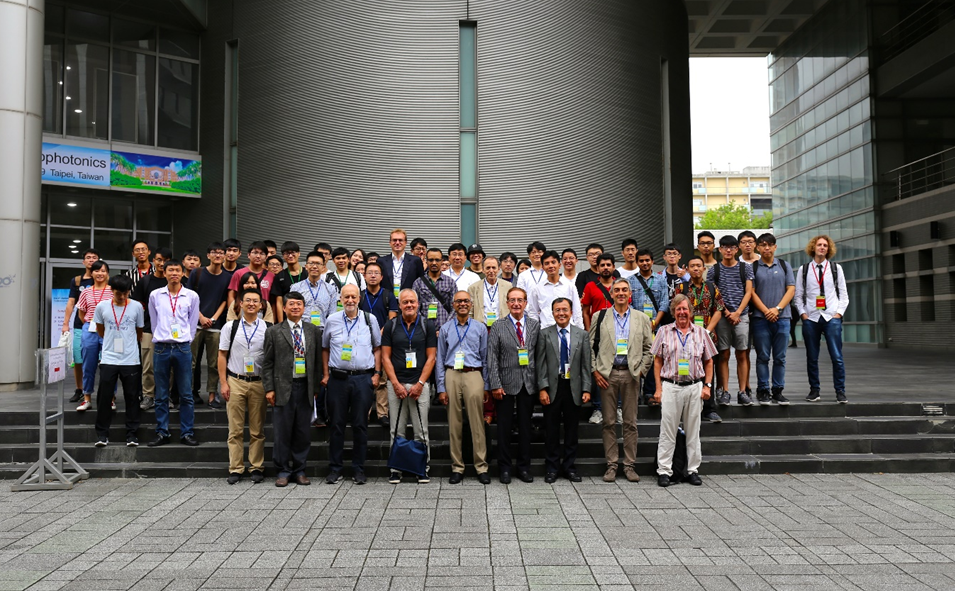 |
|
Fig. 1
Group photo of the ICB 2019 participants. |
|
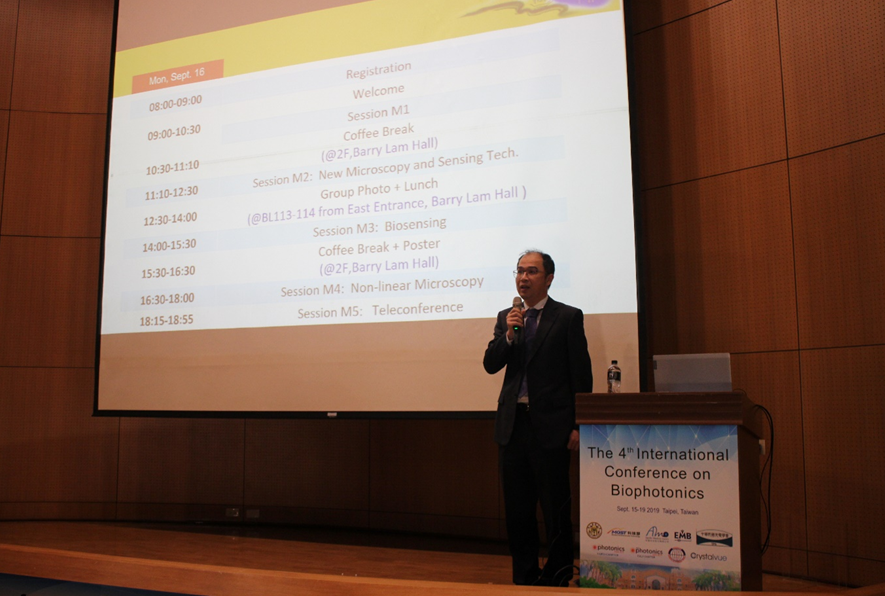 |
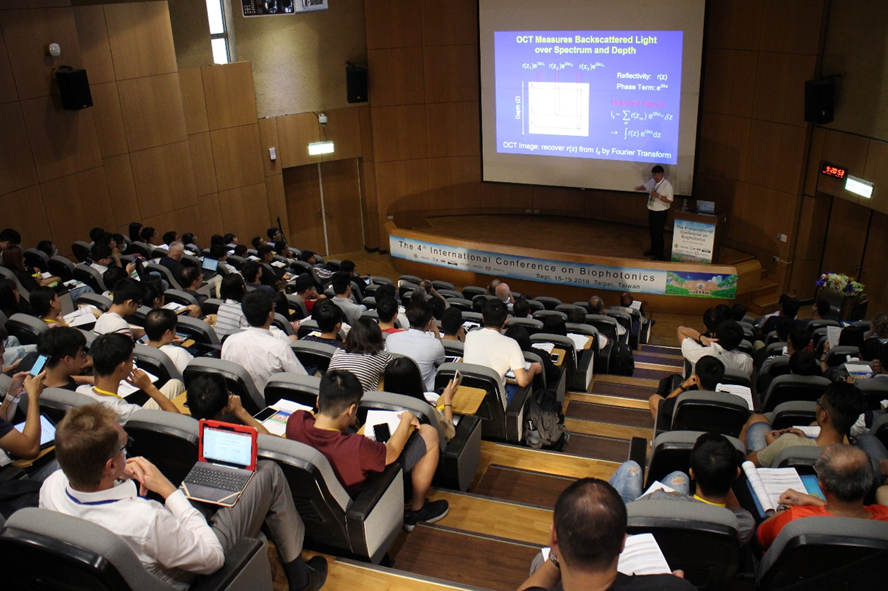 |
|
Fig. 2 Welcome address by Prof. JianJang Huang, Chairman, Graduate Institute of Photonics and Optoelectronics, National Taiwan University. |
Fig. 3 Plenary speech by Prof. Xingde Li, Johns Hopkins University, USA. |
|
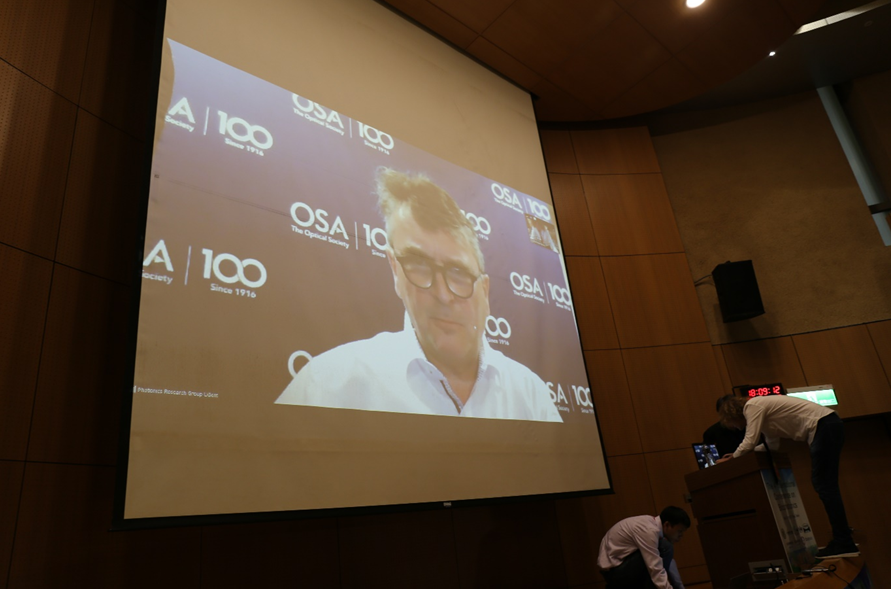 |
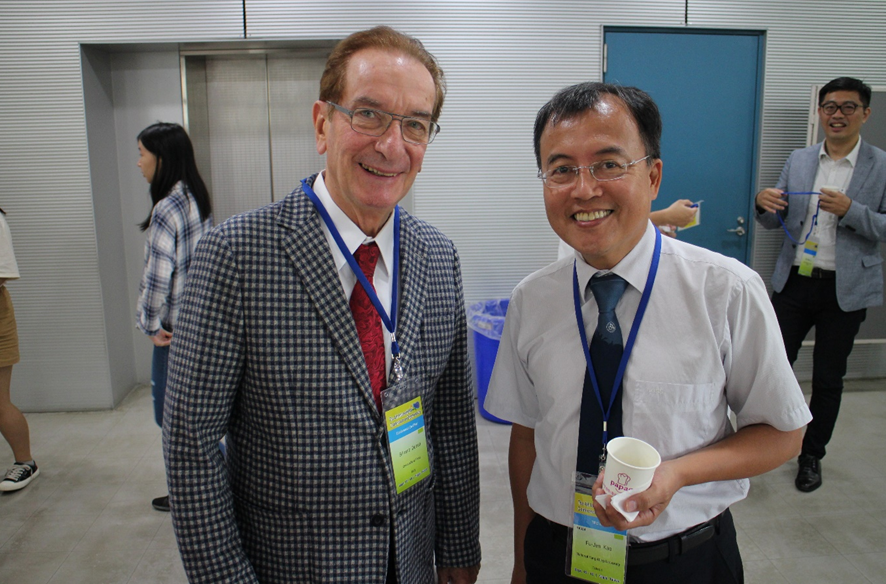 |
|
Fig. 4 Teleconference by Prof. Roel Baets, Ghent University, Belgium. |
Fig. 5 The IAC Chair (Prof. Silvano Donati, left) and TPC Chair (Prof. Fu-Jen Kao, right). |
|
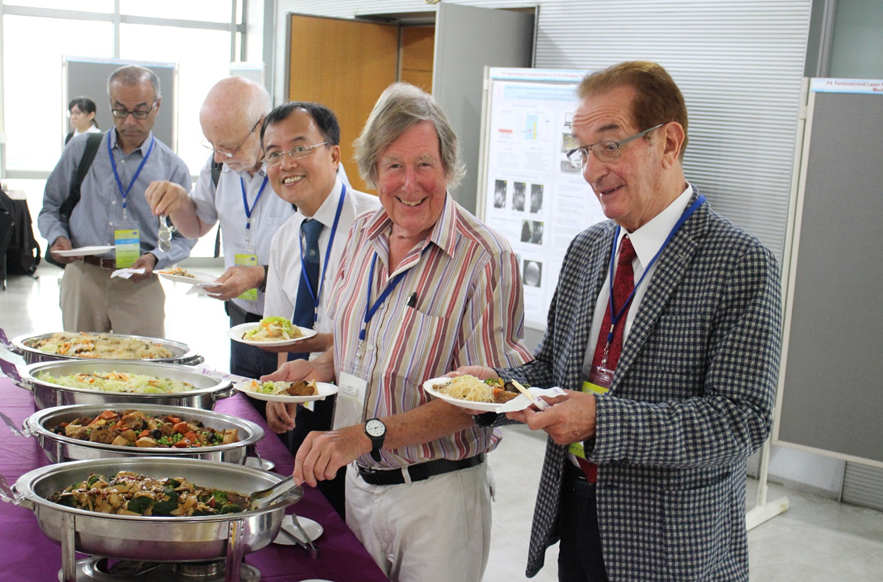 |
 |
|
Fig. 6 Lunch time at the Barry Lam Hall. |
Fig. 7 The poster session of ICB 2019. |
|
 |
|
|
|
|
|
|
|
|
|
 |
|
| |
|
 |
Development of Anti-UV Structures for OLED Displays
Professor Chung-Chih Wu
Graduate Institute of Photonics and
Optoelectronics, National Taiwan University
臺灣大學光電所 吳忠幟教授
Although OLED displays are penetrating into wider applications in consumer electronics due to their high efficiency, high contrast, and good color gamut etc., their extension to outdoor applications (e.g., wearable, vehicular, signage applications etc.) is still facing significant reliability challenges. One major issue is their weak resistance against the UV-light induced degradation; the ultraviolet light (UV-light,
λ<400nm) and high energy visible light (HEV-light, 400 <
λ
< 450 nm) in sunlight would significantly degrade OLEDs and much shorten display lifetimes. Thus, an effective anti-UV technique, that can protect OLEDs from UV/HEV damage and meanwhile maintain display performance, is strongly required. Here we report the development of effective anti-UV/HEV, high-transmittance, high-image-quality structures for OLED display panels based on carefully designed optical thin-film structures composed of more robust inorganic UV-absorbing and dielectric materials, instead of polymer/organic materials that may suffer yellowing by UV radiation.
|

|
|
Fig. 1.(a) Typical OLED panel structure. (b) Transmittance spectra of different anti-UV thin film structures. (c) Voltage shifts (ΔV) of test samples under a same current density after repeated solar soaking test cycles. |
|
 |
| |
|
|
|
 |
|
| |
|
 |
論文題目:第一原理新穎通道與鐵電材料研究及後端依時性介電崩潰之可靠度模型
姓名:陳品翔 指導教授:劉致為教授
| 摘要 |
|
當電晶體尺寸持續微縮後,使用具有高遷移率的通道材料來增加驅動電流或降低能耗是未來半導體元件發展的方向之一。在論文的第一部分將會針對鍺之同素異形體,藍絲黛爾鍺(lonsdaleite Ge)進行特性分析,包含其能帶結構、等效質量、彈道電流以及應變響應等皆會詳細分析。具有穩定結構之藍絲黛爾鍺預期能有效提升元件表現而不改變其材料構成,而其直接能隙之特性亦利於用於光電元件之應用。
元件在設計上,其截止電流須保持相同或者更低以保持低靜態功率,與此同時,亦須保持高的操作電流,因此,盡可能降低元件之次臨界擺幅十分重要。加入鐵電材料到閘極堆疊的負電容場效應電晶體,其利用鐵電材料內之偶極矩隨偏壓改變時改變極化方向之特性,將能使次臨界擺幅有效克服傳統織極限值。在論文的第二部分,將以第一原理進行正交結構氧化鋯鉿(HfZrO2)之特性分析,利用其能量與極化之關係確定其鐵電特性。以及,利用分子動力學模型計算其動態反應。除此之外,亦會探討應變對其造成之影響。
在元件尺寸不斷微縮的過程中,其失效機制亦是十分重要的一環,故在此論文中亦會探討後段製程(BEOL)中介電層的崩潰機制,造成介電層崩潰的原因可能為施加電場或是漏電流造成,如何精確的了解其機制並藉此預測其可靠度變化是十分重要的。藉由後段製程中介電層之漏電流以及時依性介電層崩潰之數據,建立可靠度的模型,藉以進行元件於正常使用狀態下之可靠度預測。
|
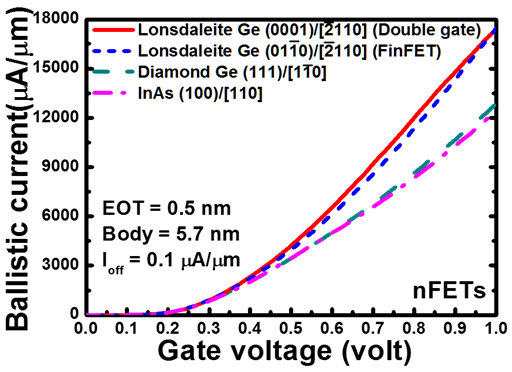
|
|
圖一、藍絲黛爾鍺具有較高之彈道電流 |
|
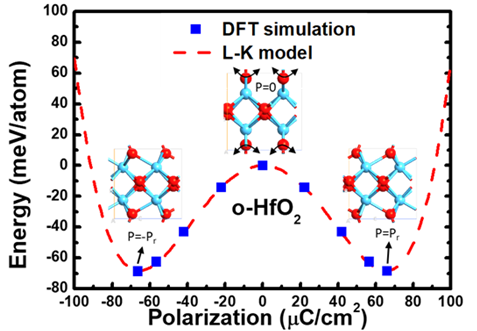
|
|
圖二、正交結構氧化鋯鉿具有鐵電材料之能量特性 |
|
|
|
 |
|
 |
|
|
|
 |
|
 |
|